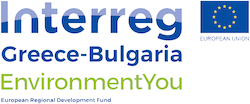The Paris Agreement was signed on 12 December 2015 at the Paris Climate Conference. It contains an action plan to limit global warming and aims to take action in response to climate change to ensure the integrity of all ecosystems, including the oceans, as well as the conservation of biodiversity, recognised by some cultures as Mother Earth.
The main elements of the Agreement are:
- Long-term goal - governments agreed to keep the global average temperature rise well below 2°C compared to pre-industrial levels and to work to limit it to 1.5°C
- Contributions - Before and during the Paris conference, countries submitted comprehensive national climate action plans (called Nationally Determined Contributions) to reduce their emissions
- Ambition - governments have agreed to submit their action plans every 5 years, with each successive plan to contain even more ambitious targets
- Transparency - to ensure transparency and oversight, the parties agreed to report both to each other and to the public on how well they are achieving their objectives
- Solidarity - EU Member States and other developed countries will continue to provide climate finance to help developing countries simultaneously reduce their emissions and build resilience to the impacts of climate change
An important element of the agreement is the general agreement that the ability to adapt to the adverse effects of climate change must be enhanced, resilience to climate change must be increased and economic development must be promoted in a low greenhouse gas-emitting way that does not threaten food production.
The Paris Agreement entered into force on 4 November 2016, having met the condition that it be ratified by at least 55 countries responsible for at least 55% of total greenhouse gas emissions. All EU countries have ratified the agreement.
In light of its provisions, each Party must develop, announce and maintain consistent nationally determined greenhouse gas reduction contributions that it intends to achieve. Countries must take domestic measures to limit emissions in order to meet these contribution targets.
This means applying integrated, holistic and balanced non-market approaches to help countries deliver their nationally determined contributions in a coordinated and effective manner in the context of sustainable development and poverty eradication, including through mitigation, adaptation, finance, technology transfer and capacity building.

